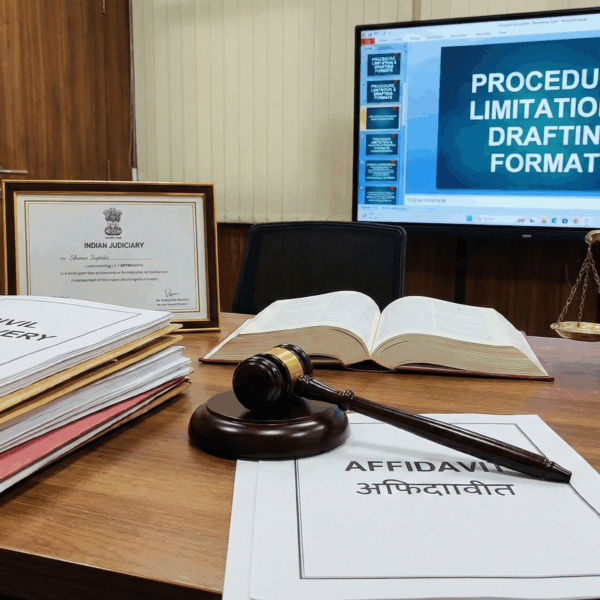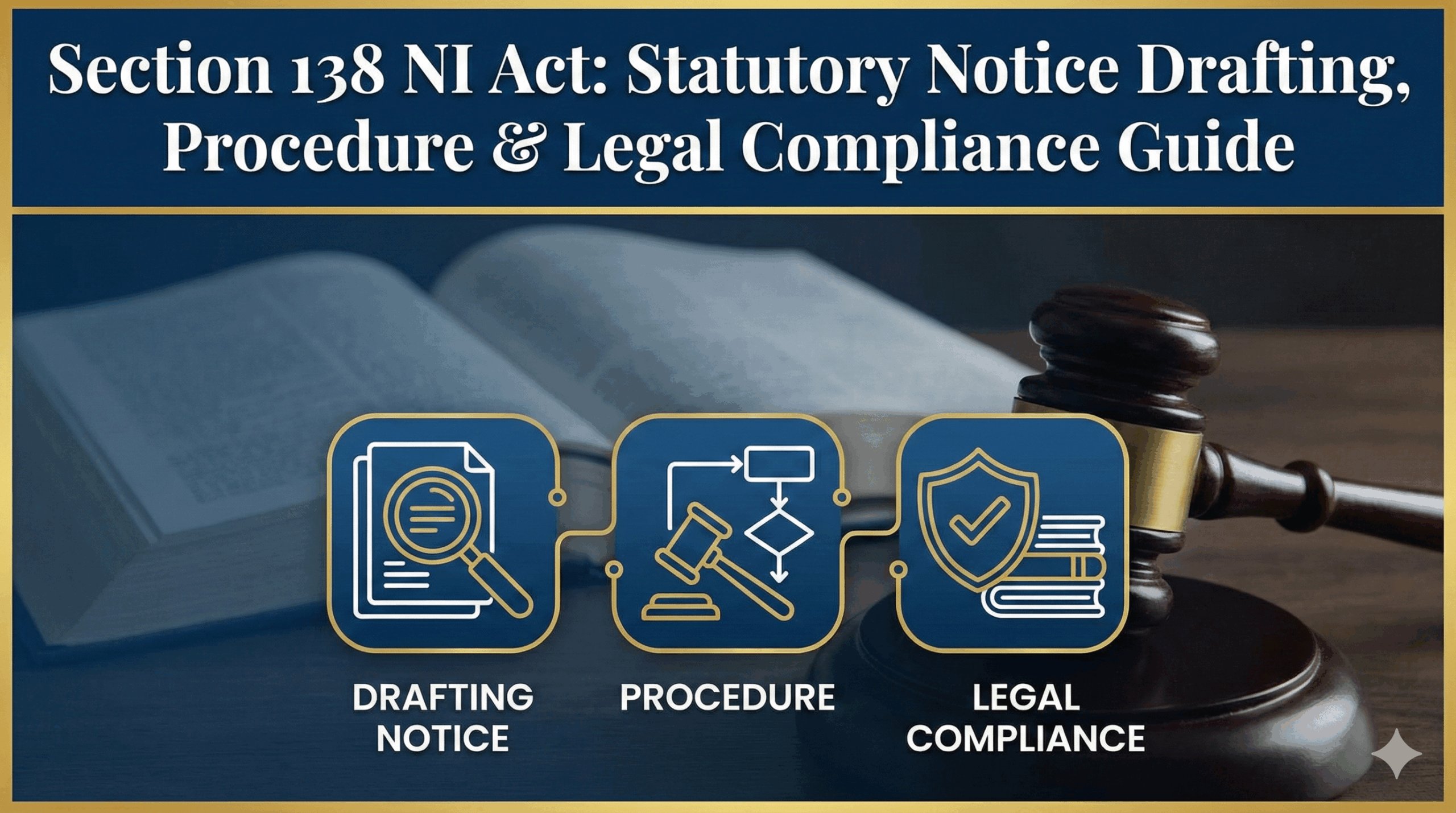Have you been unfairly terminated or pushed into resigning? The line between the two is finer than you think, and knowing the difference is critical for protecting your rights under Indian law. An employer might claim you “resigned,” while you know you were systematically forced out—a situation legally recognized as constructive dismissal.
This guide cuts through the jargon. We’ll break down the crucial differences between a lawful dismissal for misconduct and a forced resignation. Using interactive tools, landmark case laws, and clear checklists, we’ll show you the evidence you need and the steps to take—whether you’re an employee seeking justice or an employer ensuring compliance.
A Guide to Employee & Employer Rights in India Navigating the end of an employment relationship in India is fraught with legal complexities. The lines between a lawful termination, an unfair dismissal, and a resignation under duress are fine but critical. This guide provides a deep, side-by-side comparison, complete with case law, interactive tools, and practical checklists for both employees and employers. The single most important factor determining an employee's rights upon termination is their classification as a 'workman' or 'non-workman'. This distinction dictates which laws apply, the procedures for termination, and the available legal remedies. The robust protections of the Industrial Disputes Act, 1947, are reserved for 'workmen'. The law focuses on the 'Dominant Nature of Duties' test, not just the job title. Courts examine the primary functions for which the employee was hired. The Supreme Court clarified that a high salary and managerial designation are strong indicators of a 'non-workman'. The court rejected a simplistic checklist, opting for a holistic view of the role. This pushes many mid-to-senior level employees outside the protections of the ID Act, making their employment contract their primary source of rights. Understanding the difference is crucial. One is an explicit act by the employer; the other is a resignation under duress, legally termed 'constructive dismissal'. The legal responsibility to prove a claim varies significantly. Termination for Misconduct Must prove misconduct through a flawless domestic inquiry. Forced Resignation Must prove employer's actions created an intolerable environment. An employer-initiated separation must follow strict legal pathways. Confusing poor performance with misconduct is a common and costly error, often deemed a "colourable exercise of power" by courts. Summary dismissal (termination without notice/compensation) is only permissible for proven gross misconduct and requires a non-negotiable legal process. A formal document detailing the specific allegations. Time for the employee to submit a written explanation. An impartial hearing to present evidence and cross-examine. A final, written decision based on evidence. For any termination of a 'workman' not related to misconduct (e.g., redundancy, poor performance), the employer must follow the 'retrenchment' procedure under Section 25F of the ID Act. Failure to do so makes the termination illegal from the start. If you believe your separation was unlawful, a structured legal approach is essential. A strong legal notice can often lead to a settlement, avoiding lengthy court battles. Gather all documents (contract, emails, letters) and consult an employment lawyer. Do not sign any settlement waivers under pressure. Your lawyer sends a formal notice to the employer detailing the legal violations and demanding relief. This often initiates negotiation. If no settlement, file a complaint with the Labour Commissioner for conciliation (mediated settlement talks). If conciliation fails, the government refers the dispute to a Labour Court (for 'workmen') or you file a civil suit (for 'non-workmen'). Courts can award reinstatement with back wages, or monetary compensation for lost earnings, statutory dues, and damages. If a court rules in the employee's favor, it can award various remedies. Regardless of the mode of separation, you are entitled to certain dues. Here are the standard formulas for calculation. (For 'workmen' with >1 year service) (15 / 26) * Avg. Monthly Pay * Years of Service (For employees with >5 years service) (15 / 26) * Last Pay (Basic+DA) * Years of Service (As per company policy/state law) (Monthly Pay / 30) * Unavailed Leave Days (If notice period is not served) Gross Monthly Salary * Months in Notice For 'non-workmen', rights are governed by their contract and the local Shops & Establishments Act. These laws vary significantly by state. Select a state below to see the specific notice period requirements. The government plans to consolidate labour laws into four codes. The Industrial Relations Code, 2020 (IRC) will replace the ID Act. As of now, the IRC is NOT yet in effect. The old laws still apply.Termination vs. Forced Resignation
The Core Distinction: 'Workman' vs. 'Non-Workman'
Who is a 'Workman' under the Industrial Disputes Act, 1947?
⚖️ Landmark Case: M/s Bharti Airtel Ltd. v. A.S. Raghavendra (2024)
Termination vs. Forced Resignation: A Head-to-Head Comparison
Aspect
Termination for Misconduct (Dismissal)
Termination for Business Reasons (Retrenchment)
Forced Resignation (Constructive Dismissal)
What is it?
A punitive dismissal for proven gross misconduct.
Termination for reasons like redundancy or poor performance.
Employee resigns due to an intolerable work environment.
Legal Ground
Theft, fraud, violence, willful insubordination.
Any reason not excluded by Sec 2(oo) of ID Act.
Unilateral pay cuts, harassment, demotion.
Burden of Proof
On the Employer to prove misconduct via a fair inquiry.
On the Employer to prove the reason is genuine and procedure was followed.
On the Employee to prove the employer's actions forced the resignation.
Notice & Compensation
None, if misconduct is proven via a fair domestic inquiry.
Mandatory notice (or pay in lieu) and retrenchment compensation.
Treated as wrongful termination, so notice pay & compensation become due.
The Burden of Proof Scale
High Burden on Employer
High Burden on Employee
Deep Dive: The Anatomy of a Lawful Termination
Termination for Misconduct: The Domestic Inquiry
The 4 Pillars of a Fair Domestic Inquiry
1. Charge Sheet
2. Opportunity to be Heard
3. Fair Hearing
4. Reasoned Order
Termination for Business Reasons: The Retrenchment Procedure
Employee's Guide: Legal Recourse & Process
Navigating the Legal Recourse Process
Documentation & Consultation
Send a Legal Notice
Approach Labour Authorities (for 'Workmen')
Adjudication
Potential Remedies
Potential Remedies for Wrongful Termination
Calculating Your Entitlements: A Practical Guide
Retrenchment Compensation
Gratuity
Earned Leave Encashment
Notice Pay (PILON)
State-wise Nuances: Shops & Establishments Acts
State/UT
Minimum Notice Period (by Employer)
Key Conditions for Dismissal (Misconduct)
Maharashtra
30 days for >1 yr service; 14 days for 3-12 months service.
Requires a reasonable opportunity to show cause.
Delhi
30 days' notice or pay in lieu for >3 months service.
Requires an opportunity to explain the charges.
West Bengal
30 days' notice for >1 yr service.
Requires reasonable cause and opportunity to be heard. Employee can appeal.
Karnataka
30 days' notice for >6 months service.
Can be dismissed without notice for proven misconduct.
Andhra Pradesh
30 days' notice for >6 months service. +15 days' pay/year of service for >1 yr employees.
Requires a reasonable opportunity to show cause.
Punjab
30 days' notice or pay in lieu.
Governed by principles of natural justice.
The Future: Industrial Relations Code, 2020
IRC 2020: Key Changes Ahead
Before (ID Act, 1947)
After (IRC, 2020 - When Enforced)








